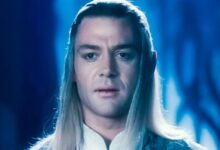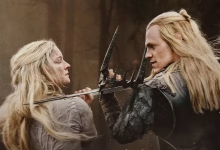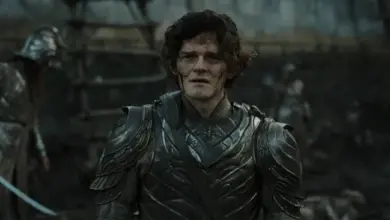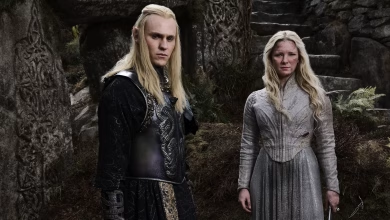What Is the War of the Elves and Sauron From ‘The Rings of Power’ Season 3?
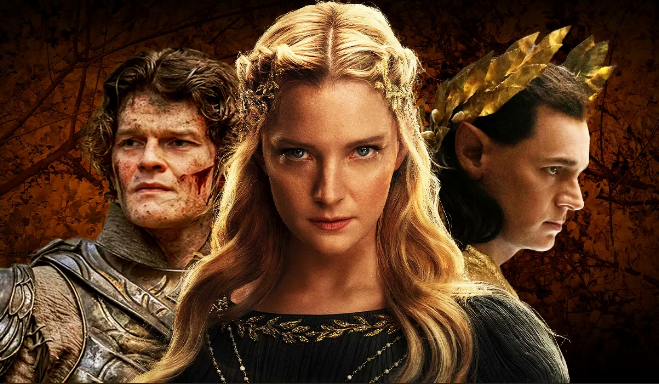
The Lord of the Rings: The Rings of Power has just been renewed for Season 3, and it’s already promising that a lot will change. According to the announcement, the story will jump “several years” forward, to “the height of the War of the Elves and Sauron (Charlie Vickers).” It’s important to correctly place this new conflict within the timeline of the Second Age of Middle-earth, because, if not looked at carefully, the War of the Elves and Sauron — and that’s exactly what this conflict is named — can lead to some confusion for those who have only ever watched Peter Jackson’s The Lord of the Rings trilogy.
The War of the Elves and Sauron Is Not the One in ‘The Fellowship of the Ring’s Prologue
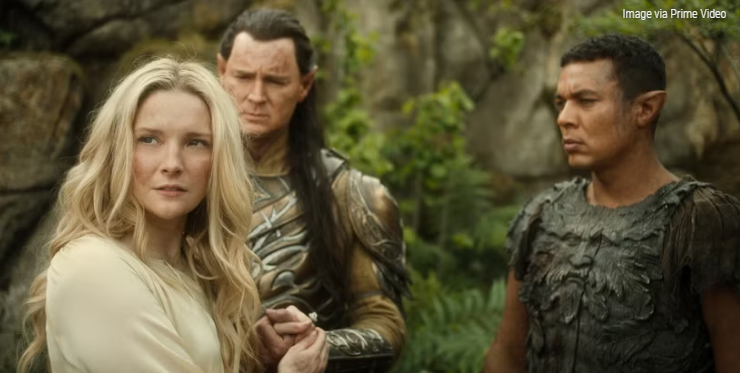
The prologue of The Lord of the Rings: The Fellowship of the Ring is one of the best parts of a movie that is already pretty much perfect. It narrates the events of the end of the Second Age, when Elves and Men join forces against Sauron in an epic battle on the slopes of Mount Doom in Mordor, resulting in the Dark Lord’s defeat and the One Ring being lost. If you read The Rings of Power Season 3 announcement and thought of that battle, sorry, you’re wrong, but the War of the Elves and Sauron is equally important.
The huge battle depicted in The Fellowship of the Ring is actually the War of the Last Alliance, fought by the Last Alliance of Elves and Men against Sauron. That’s the very last conflict of the Second Age, and the Battle of Mount Doom is the final confrontation between the Last Alliance and Sauron’s forces. This conflict takes place between the years 3429 and 3441 of the Second Age, is one of the bloodiest wars in J.R.R. Tolkien’s Legendarium, and pretty much defines the political and military landscape of Middle-earth for most of the following Third Age.
The War of the Elves and Sauron is a whole other conflict, although there are many similarities. It takes place between SA 1693 and SA 1701, and most of it is fought between the two parties that name the conflict. Its first and biggest battle is the Sack of Eregion, depicted in The Rings of Power Season 2, although this battle is completely different in the books. There, Sauron has already left Eregion after deceiving the Elves into thinking he was an emissary of the Valar named Annatar. He and Celebrimbor (Charles Edwards) have already forged the Nine Rings for Men and the Seven Dwarven Rings, with the Elves going on to forge the Three Elven Rings by themselves after Annatar leaves, and Sauron himself forging the One Ring alone in Mordor. The Three and the One are all forged without the other party knowing, and this leads to an all-out war.
The War of the Elves and Sauron Sets the Stage for the Final Conflict of the Second Age

When Sauron forges the One Ring and puts it on for the first time, he learns about the Elves and the Three because of the connection between all the Rings of Power. Meanwhile, the Elves, who had been wearing their rings, learn about Sauron’s treachery and immediately take off the Three, so as not to fall under his influence. Enraged, Sauron decides to invade the lands of Eriador and storm the realm of Eregion, where he supposes all the rings are being kept. There, he tortures Celebrimbor and forces him to reveal the location of the Nine and the Seven, but Celebrimbor dies without revealing that he sent the Three away to Lindon for safekeeping with Gil-galad (Benjamin Walker), Círdan (Ben Daniels), and Galadriel (Morfydd Clark).
The fall of Eregion leads to some things already seen in The Rings of Power Season 2 finale. For example, Elrond (Robert Aramayo) fails to save Eregion, and Sauron’s Orcs are only driven away when the Dwarves of Khazad-dûm arrive to aid the Elves. In his retreat, Elrond settles in the valley of Imladris, founding the Elven refuge known as Rivendell. Meanwhile, Gil-galad remains in Lindon, but the Orcs are not gone, and now wreak havoc over all of Eriador. Because of this, Lindon and Rivendell are isolated, with Sauron’s forces roaming free and pressing both of them. Things only change when a foreign ally joins the fight.
In SA 1700, Númenor joins the war to break Sauron’s dominion over Eriador. Led by King Tar-Minastir, the Numenóreans overwhelm Sauron’s forces, and, one year later, they are driven back to Mordor. At that time, according to the books, relations between the Elves and Numenóreans is still strong, but, in the following years of peace, Númenor consolidates itself as the mightiest military power in Middle-earth, which eventually makes its people think they could even invade Valinor itself and wage war on the Valar. The invasion fails, Númenor is sunk beneath the ocean, and only a few Numenóreans manage to save themselves, later forming the realms of Arnor and Gondor in Middle-earth.
‘The Rings of Power’ Season 3’s War Will Be Different From the Books
The War of the Elves and Sauron takes place around halfway into the Second Age, but, in The Rings of Power, this will have to be changed. That’s because, in the series, Númenor has already raised its last-ever king, Ar-Pharazôn (Trystan Gravelle), and relations between the star-shaped island and the Elves are also already bad. Ar-Pharazôn has already mentioned his grudge against the Elves for being the race favored by the Valar, and Númenor’s attempt to invade Valinor seems closer than a possible aid to the Elves in Eriador, in fact. Not to mention the fact that the One Ring will likely be forged in Season 3, while, in the books, it’s forged even before the Sack of Eregion.
What The Rings of Power could do regarding those changes is use Sauron’s invasion of Eriador as a pretext for one last show of might on Númenor’s part before Ar-Pharazôn decides to attach Valinor. In his eyes, saving the Elves and defeating Sauron could be used to sway public opinion in Númenor in favor of an attack on the Valar. Either that, or Númenor’s intervention could be what puts them in contact with the Nine Rings for Men. An agreement could be made between Ar-Pharazôn and Sauron, then, with the latter pledging to return to Mordor and the former going on to wage war against Valinor, thinking the power of the rings would give him an upper hand.
Regardless of the outcome, the War of the Elves and Sauron has many narrative gaps that Tolkien couldn’t fill, and that’s what The Rings of Power has been trying to do. The series has changed many things from Tolkien’s original story to the point of making it almost like a separate story entirely, but, at least from a storytelling perspective, it has indeed been able to neatly tie up most loose ends. Season 3 will certainly be different from the books, then, but that’s what has been making the series exciting so far.
